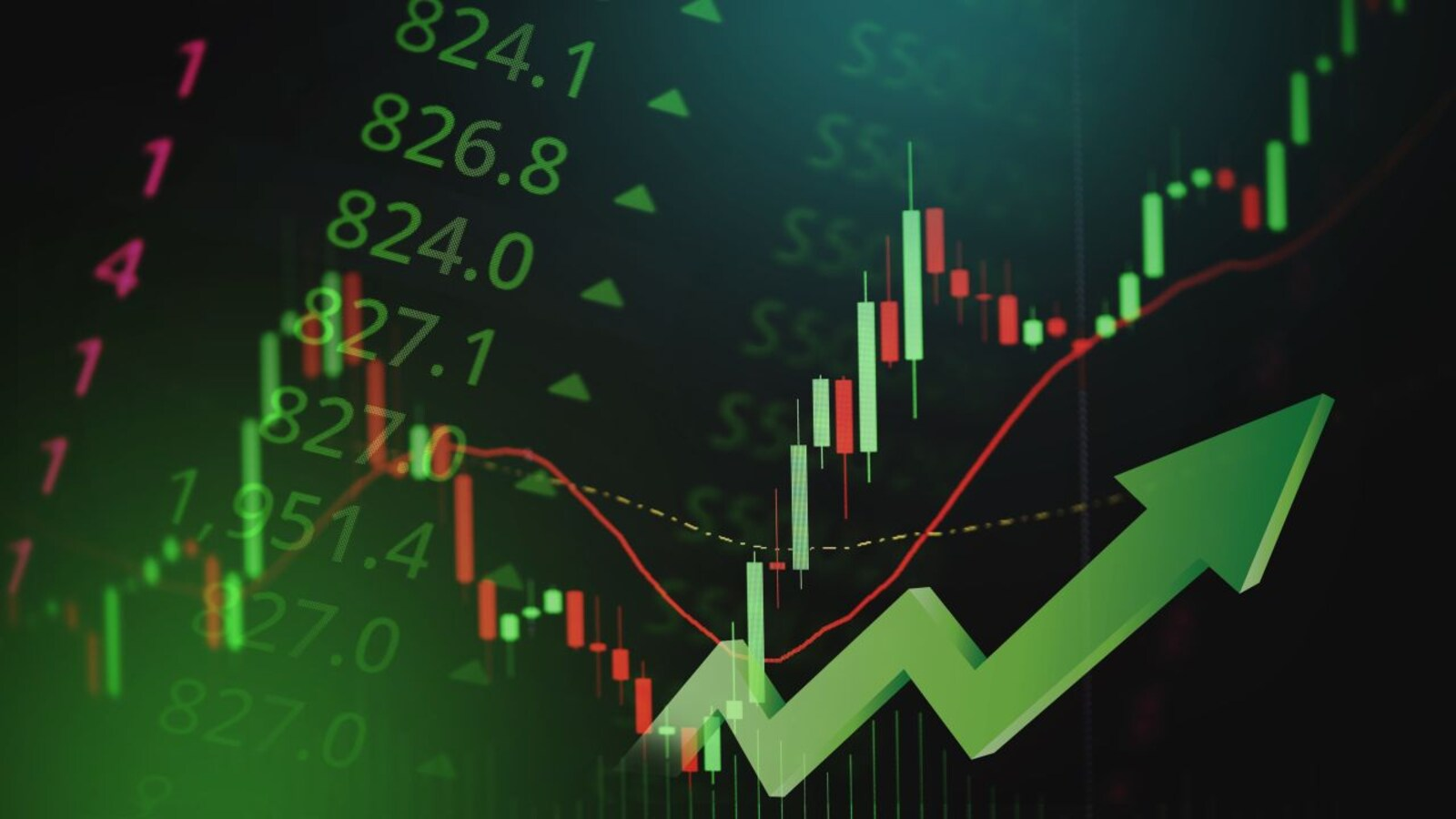Riding the Peace Wave: Decoding the Market Surge After the India-Pakistan Ceasefire
This week, there was a renewed sense of optimism in the air in the Indian financial markets. The stock market exploded in a joyful rise after the much-needed announcement of a truce between India and Pakistan. A unprecedented spike occurred on Monday, May 12, 2025, erasing earlier fears and boosting investor portfolios by billions. In-depth analysis of the market's ebullient reaction, a breakdown of the top industries, and an examination of whether this "peace wave" has the potential to provide long-term market stability are all covered in this blog article.
The Indian financial markets have abruptly sprung into a thriving green after being overshadowed by global uncertainties. What's the catalyst? a notable reduction in hostilities between India and Pakistan, as seen by the newly announced truce. This significant event has caused a sharp change in investor attitude, which has led to a strong market upswing. Come along as we dissect this rally's structure, looking at the industries that have driven this upward trend and the underlying causes that will affect how long this newfound market calm lasts.
This week, Dalal Street was resonant with the force of peace. The Indian stock market reached incredible heights as a result of a rush of buying sparked by the claimed ceasefire between India and Pakistan. The extraordinary wealth creation that occurred during Monday's trading session alone highlights the significant influence that geopolitical stability has on investor confidence. This blog article examines the financial ramifications of this favorable development, identifying the industries that profited the most from the "peace dividend" and estimating the likelihood of further market expansion in this recently tranquilized setting.
Dramatic Market Turnaround" following the India-Pakistan Ceasefire:
The change in the mood of the market was really stunning. Only a few days earlier, concerns about rising tensions had clouded trading floors, causing cautious actions and a general feeling of dread. The ceasefire announcement, however, served as an instantaneous circuit breaker for this pessimism. The Nifty 50 and the BSE Sensex both came back to life on Monday, May 12, 2025, with their biggest single-day increases in more than four years. The market's sensitivity to geopolitical stability and the bottled-up optimism that was waiting for a favorable catalyst are shown by this quick and strong comeback.
The incredible riches the market produced in a single trading session serves as a measure of the degree of its turnaround. On Monday, the total value of investors' holdings increased by an incredible ₹16.15 lakh crore. This enormous number highlights how the improving geopolitical picture has a direct and immediate financial impact. In addition to reflecting restored investor confidence, the rise in the total market capitalization of BSE-listed companies to over ₹432 lakh crore also represents a significant improvement in both individual wealth and market sentiment.
When considering this market turnaround in the context of the previous days, its spectacular character becomes even more evident. Investors were cautious due to the increased tensions between India and Pakistan, fearing disruptions and negative economic effects. More muted trading activity and a general hesitancy to take on large risk were signs of this uncertainty. Overnight, the ceasefire announcement essentially turned this story around, releasing the pent-up caution and igniting a rush of aggressive purchasing by investors eager to take advantage of the newfound stability and the possibility of long-term market growth.
The Tech Triumph - Nifty IT Leads the Charge
Leading the charge in this market resurgence was the Nifty IT index, which registered an impressive gain of over 6.5%. This robust performance can be attributed to several factors. Firstly, the easing of geopolitical tensions generally improves global risk sentiment, which often benefits export-oriented sectors like IT. Secondly, the reported progress in US-China trade discussions provided an additional tailwind, as the Indian IT sector has significant revenue exposure to the US market. Consequently, major players like Infosys, HCL Tech, Tata Consultancy Services, and Tech Mahindra witnessed substantial rallies in their stock prices, reflecting the renewed optimism surrounding their growth prospects in a more stable global environment.
Realty Rebounds on Renewed Confidence
The Nifty Realty index also emerged as a significant beneficiary of the improved geopolitical climate, showcasing the sensitivity of the real estate sector to overall market confidence. The easing of tensions likely instilled a greater sense of stability, encouraging potential buyers and investors who might have previously held back due to uncertainty. This renewed optimism translated into strong gains for major real estate developers and related ancillary industries. The anticipation of a more stable economic outlook, coupled with potentially increased investment flows, fueled the positive movement in the realty sector, suggesting a potential revival in property markets.
Metals Mettle - Riding the Wave of Global Optimism
Another sector that witnessed notable gains was the Nifty Metal index. This performance was likely driven by a combination of factors, including the improved global risk appetite following the easing of both geopolitical and trade tensions. A more stable international environment often translates to increased demand for industrial metals. Furthermore, positive signals regarding global economic growth, even tentative ones, tend to boost the prospects of metal and mining companies. The strong showing in the metals sector underscores the interconnectedness of the Indian market with global economic and political developments, highlighting its sensitivity to shifts in international sentiment.
Sustainability of the Uptrend:
Ultimately, the long-term sustainability of this market uptrend would hinge on a consistent period of peace and stability in the subcontinent, coupled with robust and sustained economic growth both globally and within India. While the ceasefire provides a much-needed respite and a positive trigger, investors should maintain a long-term perspective and avoid getting carried away by short-term exuberance. Strategic asset allocation, focusing on fundamentally strong companies and sectors poised for long-term growth, remains crucial. Any dips in the market driven by profit-booking or minor setbacks could present opportunities for long-term investors, provided the overarching positive narrative of peace and economic recovery holds. Continuous monitoring of geopolitical developments, economic indicators, and corporate performance will be essential for navigating the market in the coming weeks and months.
Expert Opinions
Investment strategists in Delhi are generally recommending a balanced approach for investors. While acknowledging the positive impact of the ceasefire, they advise against aggressive buying and suggest focusing on portfolio diversification and risk management. Many are suggesting that any dips in the market could present opportunities for long-term investors with a higher risk appetite, provided the fundamental outlook remains positive. Experts also emphasize the importance of carefully evaluating individual stock valuations and avoiding speculative bets based solely on the current positive sentiment. They recommend a selective approach, favoring companies with strong fundamentals, sustainable growth prospects, and reasonable valuations, while closely monitoring geopolitical developments for any potential shifts in the current positive narrative.
Investor Strategy
For investors in Delhi, the current market euphoria necessitates a balanced approach. While the sharp rally presents opportunities, it's crucial to avoid impulsive decisions driven by short-term sentiment. The focus should remain on long-term investment goals and a well-thought-out asset allocation strategy. Investors should review their portfolios to ensure they align with their risk tolerance and financial objectives. Rather than chasing quick gains, the emphasis should be on fundamentally strong companies with sustainable growth potential. Any portfolio adjustments should be gradual and based on thorough research rather than emotional reactions to the market's immediate response to the ceasefire.
While the overall market sentiment is positive, investors in Delhi should adopt a selective approach to fresh investments. Identifying sectors and companies that are fundamentally sound and likely to benefit from a period of sustained peace and economic stability is key. It's also prudent for investors who have seen significant gains in their portfolios to consider partial profit booking to secure some returns and rebalance their holdings. This strategy can help mitigate potential downside risks if the market momentum slows down or if unforeseen negative developments arise. However, any profit-booking should be strategic and aligned with individual investment horizons.
In the current environment, vigilance and proactive risk management are paramount for investors in Delhi. Closely monitoring geopolitical developments and economic indicators is crucial to stay ahead of potential shifts in market sentiment. Investors should also be wary of excessive leverage and avoid concentrating their investments in a few sectors or stocks. Diversification across asset classes and sectors remains a fundamental principle of sound investment strategy. Regularly reviewing and rebalancing the portfolio based on evolving market conditions and individual risk appetite will be essential to navigate the potential volatility that can follow periods of sharp market movements.
Ceasefire: A Fragile Peace Amidst Lingering Concerns
While the immediate market reaction to the India-Pakistan ceasefire has been overwhelmingly positive, a deeper analysis reveals that labeling it unequivocally "good" might be premature. While the de-escalation of tensions is undoubtedly a welcome relief from the immediate threat of conflict, concerns linger regarding the underlying issues and the potential for future instability. The long-term effectiveness and the concessions, if any, made by either side remain unclear, leaving room for skepticism about the enduring nature of this peace.
The reported involvement of the United States, particularly under a Trump administration, in brokering this ceasefire also raises questions. While external mediation can sometimes be helpful in de-escalating conflicts, the specific terms and the motivations behind US intervention warrant careful scrutiny. A transactional approach to such sensitive geopolitical issues, potentially prioritizing short-term gains over addressing the root causes of the conflict, could lead to an unsustainable peace. The potential for future leverage or conditions attached to US involvement might also create new complexities in the bilateral relationship.
Ultimately, the "goodness" of this ceasefire will be judged by its longevity and its ability to pave the way for meaningful dialogue and resolution of the core issues that have historically plagued India-Pakistan relations. A temporary lull in hostilities, even if welcomed by the markets, does not necessarily equate to a lasting peace. Without transparency regarding the terms of the agreement and a clear path towards addressing the fundamental disagreements, the current optimism could prove to be short-lived, leaving the region vulnerable to renewed tensions in the future.
In conclusion, the Indian financial markets have reacted with palpable enthusiasm to the announced ceasefire between India and Pakistan, triggering a significant rally and injecting substantial wealth back into investor portfolios. The immediate removal of geopolitical risk has been a powerful catalyst, particularly for sectors like IT and realty. However, while the initial surge is encouraging, the long-term sustainability of this uptrend remains contingent on the durability of the peace and a continued positive global and domestic economic environment. Investors in Delhi should acknowledge this initial relief while remaining vigilant and discerning in their investment strategies.















Comments
Post a Comment